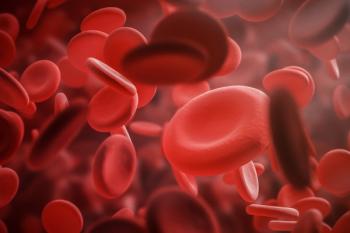
First leukemia drug in 10 years cleared for kids
An estimated 3,400 cases of pediatric acute leukemia will be diagnosed in the United States in 2005. Acute lymphoblastic leukemia (ALL) is the most common form of pediatric leukemia, and children who do not respond to initial therapy, or who relapse, have a very poor prognosis.
An estimated 3,400 cases of pediatric acute leukemia will be diagnosed in the United States in 2005. Acute lymphoblastic leukemia (ALL) is the most common form of pediatric leukemia, and children who do not respond to initial therapy, or who relapse, have a very poor prognosis.
The Food & Drug Administration recently granted accelerated approval to clofarabine (Clolar, Genzyme), the first new leukemia treatment approved specifically for children in more than a decade. It is indicated for the treatment of pediatric patients one to 21 years old with relapsed or refractory ALL after undergoing at least two prior regimens. Clofarabine is commercially available as a 1 mg/ml concentration in a 20-ml single-use vial. Clofarabine received orphan drug designation for adult and pediatric ALL.
Sima Jeha, M.D., lead clofarabine investigator and director of developmental therapeutics in the Division of Leukemia/Lymphoma at St. Jude Children's Research Hospital in Memphis, said, "Over the past 20 years, we've made a lot of progress in treating pediatric leukemia using older agents. We have reached a point where we need a new agent to try to improve upon our gains and help those who do not respond to current regimens."
Koontz explained that clofarabine is a purine nucleoside antimetabolite that inhibits DNA synthesis by decreasing cellular deoxynucleotide triphosphate pools. Clofarabine's safety profile is similar to those of other chemotherapy agents in this class that are used to treat leukemia, she said. The most common adverse effects associated with clofarabine therapy in clinical trials were gastrointestinal tract symptoms; hematologic effects, including anemia, leukopenia, thrombocytopenia, and febrile neutropenia; and infection.
Hepatobiliary and renal toxicities were observed in children treated with clofarabine, said Koontz. The manufacturer recommends that the concomitant use of clofarabine and drugs with known hepatic or renal toxicity should be avoided. Careful hematologic monitoring during therapy is important and hepatic and renal function should be assessed prior to and during treatment with clofarabine, she said.
Koontz advised that clofarabine administration results in a rapid reduction of peripheral leukemia cells. For this reason, she said that patients should be evaluated and monitored for signs and symptoms of tumor lysis syndrome, in addition to signs and symptoms of cytokine release that could develop into systemic inflammatory response syndrome/ capillary leak syndrome, and organ dysfunction. In addition, Genzyme recommends that respiratory status and blood pressure be monitored during clofarabine infusion.
Koontz said that the recommended pediatric dose and schedule for clofarabine is 52 mg/m2 administered by intravenous infusion over two hours daily for five consecutive days. She pointed out that this could be done in an outpatient setting, whereas other regimens may require hospitalization, either for administration or treatment of complications.
Treatment cycles are repeated following recovery or return to baseline organ function, approximately every two to six weeks. Prior to infusion, clofarabine should be diluted with 5% dextrose injection, USP, or 0.9% sodium chloride injection, USP, Koontz said.
Genzyme said that clofarabine has been studied in children with relapsed or refractory acute myeloid leukemia (AML). Last December, an FDA advisory committee advised conducting additional studies in this group before recommending an AML approval. The firm is planning to seek approval for this indication.
Newsletter
Pharmacy practice is always changing. Stay ahead of the curve with the Drug Topics newsletter and get the latest drug information, industry trends, and patient care tips.

















































































































